Valuable Rare Coins That Could Be Hidden in Your Collection
Every once in a while, a client walks into my office with a shoebox of coins—sometimes inherited, sometimes forgotten in a drawer—and I can see it immediately: they have no idea what’s inside. And just as often, that box holds...

Every once in a while, a client walks into my office with a shoebox of coins—sometimes inherited, sometimes forgotten in a drawer—and I can see it immediately: they have no idea what’s inside. And just as often, that box holds a sleeper hit. A coin that seems ordinary—until you understand the reverse of what you’re looking at. Sometimes, the rarity of a coin is determined by how the coins were struck during production, making certain coins struck in specific years or with unique features especially valuable.
That’s the magic of rare coins.
Hidden in Plain Sight: Coins That Are Worth Money

You don’t need to be a seasoned collector to unknowingly own something valuable. In fact, some of the most valuable coins in circulation today started as everyday pocket change.
Take the 2000 Sacagawea “Cheerios” dollar, for example, which is often compared to more common quarters. Originally distributed inside cereal boxes as a promotion, it features a prototype reverse with enhanced detail on the eagle’s tail feathers. Value? Over $5,000 in mint state. Or the 1982-D small date Lincoln penny, worth thousands—if you can find it in copper, not zinc. The legendary 1943 Lincoln Head Copper Penny is another example, with one recently selling at auction for over $1 million. If you’re lucky enough to find one, it could fetch you a pretty penny.
These aren’t museum pieces. They were minted for the public. They could be in your coin jar right now.
What Makes Rare Coins... Rare?
Not all rare coins are old. Some are rare because of:
-
Low mintage numbers — Some coins are much rarer than others even within the same series, making certain vintages especially sought after by collectors.
-
Minting errors
-
Historical relevance
-
Unique features like privy marks or high-relief designs
What’s crucial is this: value isn’t always visible. It’s the intersection of scarcity, demand, and certified authenticity that sets these coins apart.
Coin Errors and Varieties: The Hidden Gems

Some of the most valuable coins ever discovered weren’t meant to be rare—they were born from mistakes. Coin errors and varieties are the secret superstars of the numismatic world, often hiding in plain sight and commanding high prices when recognized by savvy collectors.
Take the legendary 1943 Lincoln Head Copper Penny. During World War II, the U.S. Mint switched to steel pennies to conserve copper for the war effort. But a handful of copper planchets were accidentally left in the coin presses, resulting in a tiny number of 1943 pennies struck in copper instead of steel. These rare coins have sold for tens of thousands of dollars, with one example fetching a staggering $336,000 at auction. If you find a 1943 penny that sticks to a magnet, it’s steel—but if it doesn’t, you might be holding a fortune.
Another classic is the 1955 Doubled Die Penny. Due to a misalignment in the coin die, the date and inscriptions on the obverse appear doubled, making this error instantly recognizable. Depending on its condition, this doubled die penny can be worth a few hundred dollars or much more, and it remains one of the most sought-after error coins among collectors.
Modern coins aren’t immune to valuable mistakes, either. The 2004-D Wisconsin State Quarter With an Extra Leaf is a prime example. Some quarters from the Denver Mint were struck with an extra leaf on the left side of the ear of corn in the design. This subtle error has turned an ordinary quarter into a valuable collectible, with some examples selling for up to $300.
These hidden gems prove that not all valuable coins are old or flashy—sometimes, it’s the quirks and mistakes that make a coin truly rare. If you’re sorting through your collection, keep an eye out for doubled dies, extra leaves, and other unusual features. You might just uncover a coin worth far more than its face value.
Do You Know What You Have?
Most people don’t. And worse, most people clean their coins—thinking they’re helping.
Pro tip: Don’t.
One of the biggest mistakes collectors and heirs make is a simple mistake: cleaning coins. “Does Coca-Cola clean coins?” It might—but you’ll also destroy the patina, the character, and the value. In fact, even lightly “cleaned” coins can lose 50–90% of their resale value.
What not to store coins in? PVC coin flips. Over time, they leach chemicals that can permanently damage your coins.
And if you’re wondering: How do professionals clean copper coins? Carefully. Usually, with non-abrasive distilled water rinses or electrochemical methods under magnification, and almost never without risk.
Coin Grading and Authentication: Separating Fact from Fantasy

When it comes to valuable coins, condition and authenticity are everything. That’s where coin grading and authentication come in—turning guesswork into science and protecting collectors from costly mistakes.
Two of the most trusted names in the industry are the Professional Coin Grading Service (PCGS) and the Numismatic Guaranty Corporation (NGC). These organizations use standardized grading systems to evaluate a coin’s condition, rarity, and overall value. A coin graded by PCGS or NGC comes with a guarantee of authenticity and a clear assessment of its grade, which can make a huge difference when it’s time to sell.
But the world of rare coins isn’t without its pitfalls. Counterfeit coins are a real threat, with some fakes so convincing that even experienced collectors can be fooled. That’s why it’s crucial to buy only from reputable dealers and to have your coins authenticated by a trusted grading service. Don’t let a too-good-to-be-true deal turn into a costly lesson.
Mint marks also play a key role in a coin’s value. For example, the Roosevelt Dime is a staple of American coinage, but certain mint mark varieties are exceptionally rare. The 1982 No Mint Mark Roosevelt Dime—struck at the Philadelphia Mint without its usual “P” mint mark—is a prime example. This rare Roosevelt dime coin can sell for thousands of dollars, simply because of a missing letter.
Whether you’re buying, selling, or just curious about your collection, professional grading and authentication are your best defenses against disappointment. They separate fact from fantasy, ensuring that your coins are as valuable as you believe.
So What If You Want to Sell?

Whether you’re downsizing, inheriting a collection, or just getting serious about portfolio diversification, knowing how to sell without getting ripped off is essential.
Here’s what I tell clients at Global Coin:
-
Get a grading report. PCGS or NGC certification establishes credibility.
-
Know your audience. Bullion buyers aren’t the same as high-end collectors.
-
Work with a specialist. Don’t take your coins to a pawn shop or eBay without knowing their real value.
Take the 1995-W Silver Eagle Proof, for example. This rare coin features the iconic image of Lady Liberty walking confidently, a symbol of freedom and hope that has defined U.S. coinage for generations. Her depiction on the Silver Eagle is one reason the coin is so highly prized by collectors.
And yes, we buy collections—but only after giving you an honest evaluation and explaining why a coin is or isn’t worth what you think.
Why It Matters—Even If You’re Not a Collector
Rare coins aren’t just collectibles. They’re tangible assets. They hedge against inflation, they diversify a portfolio, and most importantly, they hold emotional and legacy value. While gold bullion is primarily valued for its precious metal content and market price, rare coins offer additional collectible and historical value that goes beyond their metal worth. Some of the most valuable coins are also the most beautiful, tied to culture, history, and moments in time that outlast any stock ticker.
At Global Coin, our philosophy is simple: You don’t need to own 1,000 coins—just the right ones. The right grade. The right rarity. The right story.
Coin Preservation and Storage: Protecting Your Hidden Fortune

Owning valuable coins is only half the battle—keeping them in mint condition is what preserves their value for years to come. Proper coin preservation and storage are essential for any serious collector or investor.
First, always store your coins in a cool, dry place, away from direct sunlight and moisture. Humidity and temperature swings can cause tarnish, corrosion, or spotting, all of which can diminish a coin’s value. The Royal Mint and other leading mints recommend using acid-free coin albums, folders, or holders to protect your coins from scratches and environmental damage.
When handling coins, use cotton gloves or a soft cloth to avoid transferring oils and dirt from your skin onto the coin’s surface. Even a fingerprint can leave a permanent mark, especially on proof or uncirculated coins. Never clean your coins with chemicals or abrasive materials—this can strip away the original finish and reduce their value dramatically.
For long-term storage, consider using inert holders or certified slab cases, which offer both protection and easy viewing. Avoid PVC-based plastics, as they can release chemicals over time that damage coins. By following these best practices, you’ll help ensure your collection remains in mint condition, retaining its value and appeal for generations.
What Coin Is Worth the Most?
Today, that’s likely the 1933 Saint-Gaudens Double Eagle—valued at over $18 million. Another example is the 1913 Liberty Head Nickel, a rare nickel that has also fetched millions at auction. But tomorrow? It could be something sitting in a binder in your attic.
So before you sell. Before you clean. Before you assume it’s junk…
Let us help you uncover what’s actually in your collection.
👉 Shop Our Premium Coins You might just find the next modern masterpiece waiting for you.
If You’re Thinking of Selling or Upgrading Your Collection

Here’s what I recommend:
-
Get an Expert Evaluation – Don’t guess. We offer professional assessments rooted in grading, market comps, and narrative potential.
-
Avoid Cleaning – Even a light polish can destroy value. Leave coins in their natural state.
-
Document Provenance – The story matters. A coin with a known chain of ownership often commands a premium.
-
Be Strategic – Sometimes it’s smarter to upgrade, not expand. Fewer high-quality coins usually outperform large but low-grade collections.
Some of the most notable rare coin sales have taken place in January, October, and December, showing how timing can play a key role in the coin market.
You don’t need 1,000 coins. You need the right 10.
Shop with Confidence
Whether you’re discovering treasures in your own collection or seeking investment-grade additions, our mission remains clear: bring clarity, trust, and strategy to rare coin ownership.
Explore our expertly curated, premium coins designed for collectors, investors, and legacy-builders.
👉 Shop Our Premium Coins – Because the rarest coin in your life might already be in your hands.
The Coin Collecting Community: Where Stories and Fortunes Meet

Coin collecting isn’t just about the coins—it’s about the people, the stories, and the shared passion that brings collectors together, often seen at heritage auctions. The coin collecting community is a vibrant network where knowledge, history, and opportunity intersect.
Coin shows and conventions are the beating heart of this community, offering collectors the chance to buy, sell, and trade valuable coins in person. These events are also a goldmine for learning, with experts on hand to answer questions and share insights. If you’re looking to discover rare error coins or the most valuable coins, attending a coin show can be an eye-opening experience.
Heritage Auctions and other reputable auction houses regularly feature some of the rarest coins in the world. Take the 1969-S Lincoln Cent with a Doubled Die Obverse—one of the most valuable coins ever sold, with only a few dozen examples known to exist. Auctions like these are where fortunes are made and legends are born, with collectors vying for coins that rarely surface in circulation today.
Beyond the auction floor, the coin-collecting community thrives online and in local clubs. Forums, social media groups, and club meetings are perfect places to connect with fellow collectors, share discoveries, and deepen your understanding of coins and their history. Whether you’re a seasoned numismatist or just starting out, joining the community can help you unlock the full potential of your collection—and maybe even make a few friends along the way.
In the world of rare coins, every collector has a story. By engaging with the community, you’ll find that the journey is just as rewarding as the treasures you uncover.
Q&A: Everything You’re Afraid to Ask About Coin Care & Selling
Does Coca-Cola clean coins?
Technically, yes. The acidity in soda can remove dirt or tarnish—but at a steep cost. Cleaning coins, especially with chemicals, destroys patina, surface quality, and long-term value. Never use Coca-Cola (or any cleaner) on valuable coins.
What not to store coins in?
Avoid PVC flips—they release acidic gases over time that corrode metal. Also skip plastic bags, paper envelopes, or humid environments. Opt for inert holders, archival sleeves, or certified slab cases.
How much value does a cleaned coin lose?
Sometimes 50–90%. Cleaning removes original surfaces and luster—key components of grade and value. Even light wiping can render a coin “details only,” dropping it out of top-grade contention.
How do professionals clean copper coins?
Carefully—and rarely. When necessary, they use distilled water, non-reactive solutions, or electrochemical processes under strict conditions to preserve details like an extra leaf . Most professionals avoid cleaning unless preservation is at risk.
How do I sell a collection without getting ripped off?
Work with a trusted dealer like Global Coin. Get appraisals from certified experts, compare offers, and ask questions. We focus on transparency, education, and maximizing long-term value—not just fast flips.
Related Articles
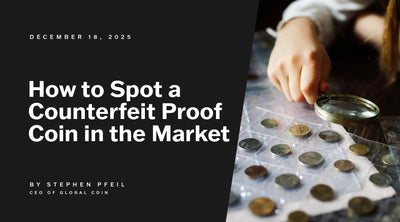
How to Spot a Counterfeit Proof Coin in the Market
How to Spot a Counterfeit Proof Coin in the Market In the world of numismatics, few things hold ...
Discover More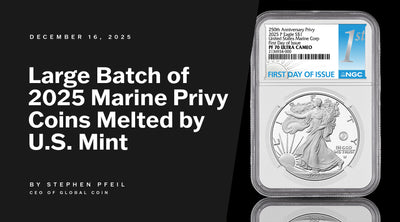
BREAKING NUMISMATIC NEWS: Large batch of 2025 Marine Privy Coins MELTED by U.S. Mint
BREAKING NUMISMATIC NEWS: Large batch of 2025 Marine Privy Coins MELTED by U.S. Mint A historic ...
Discover More
Tax Implications When You Sell Gold Bullion in Different States
Disclaimer: The following content is for informational purposes only and should not be construed ...
Discover More


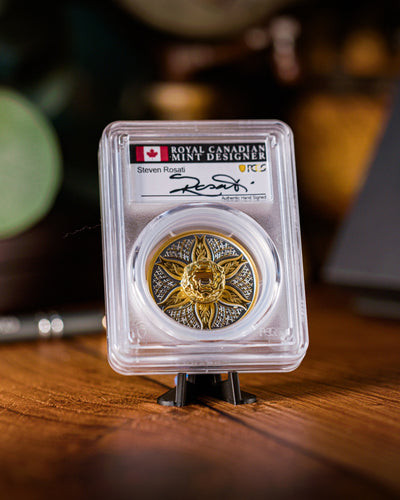
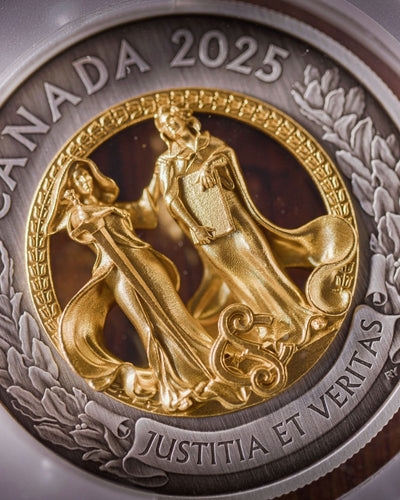
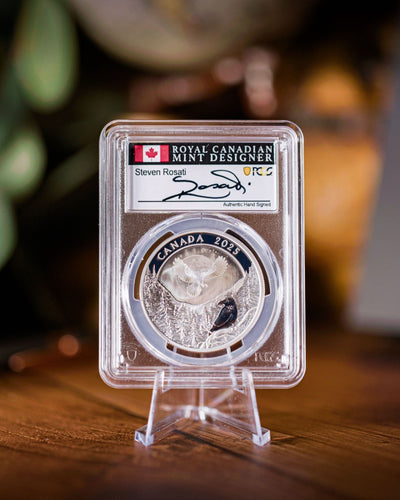
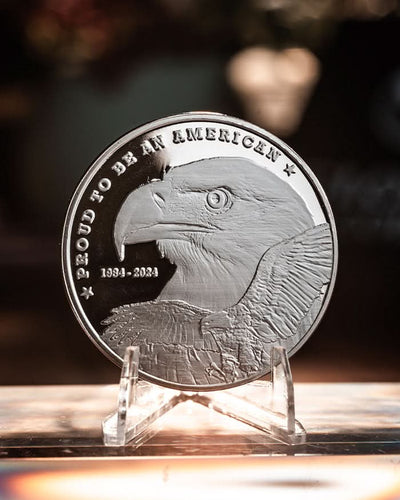
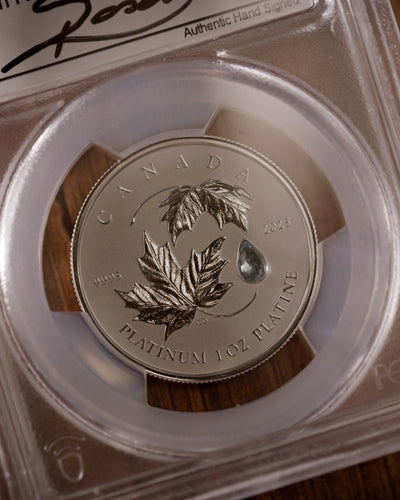
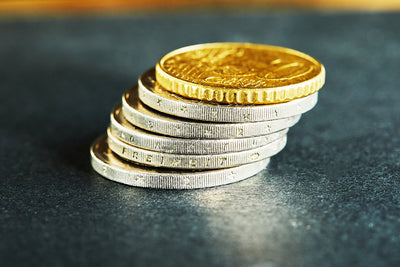
Leave a comment
This site is protected by hCaptcha and the hCaptcha Privacy Policy and Terms of Service apply.